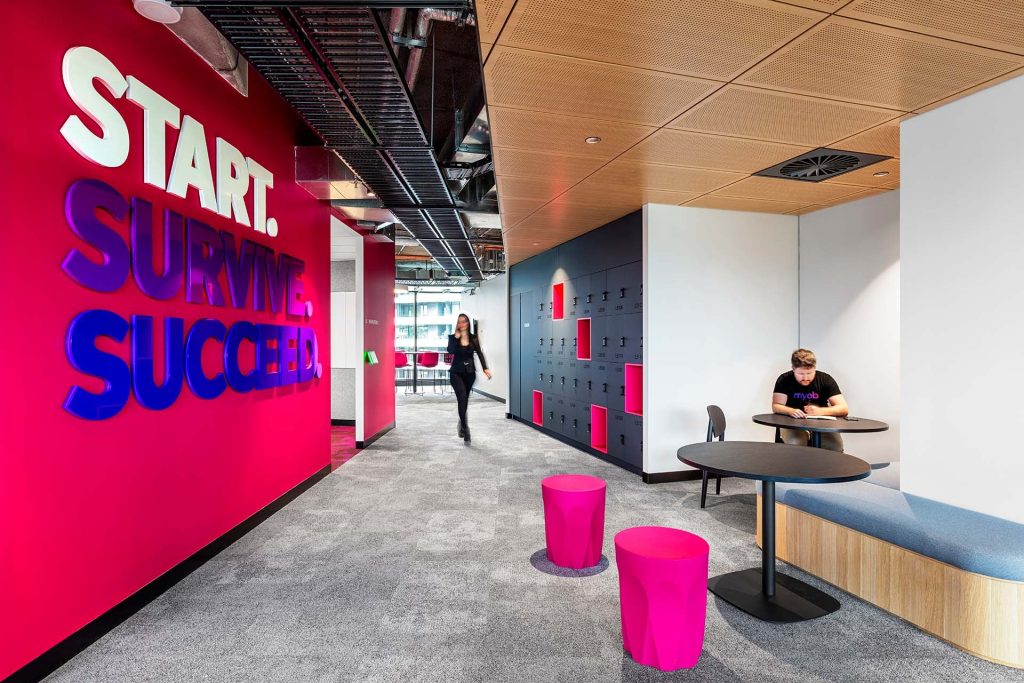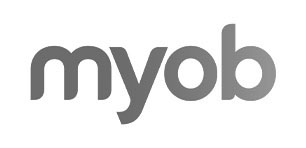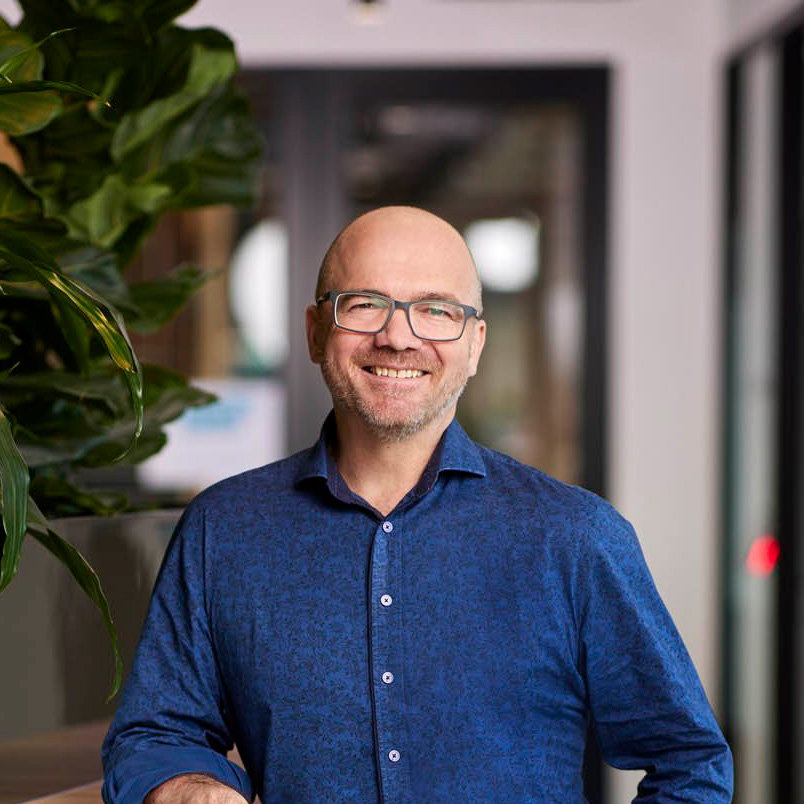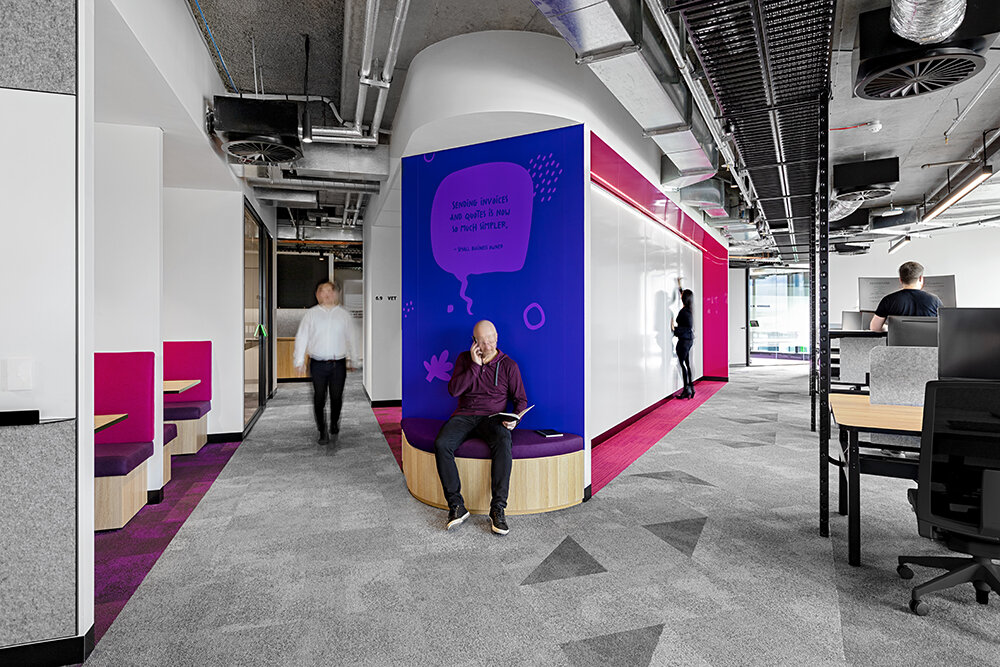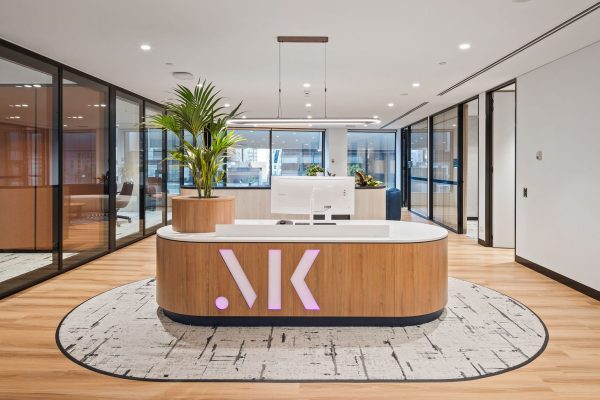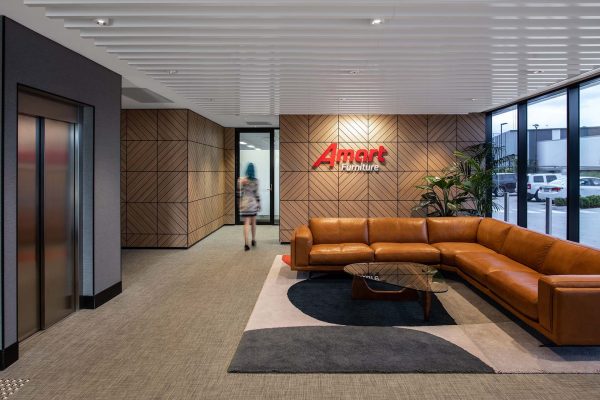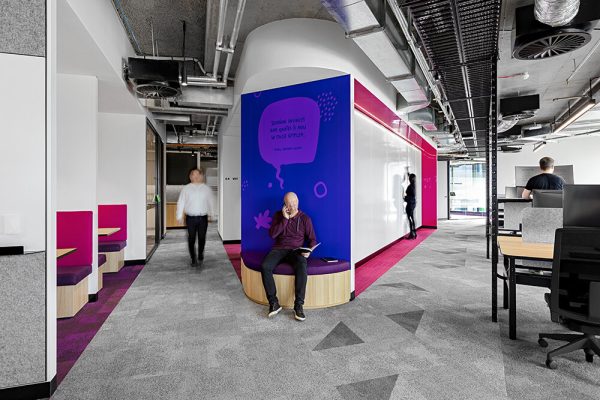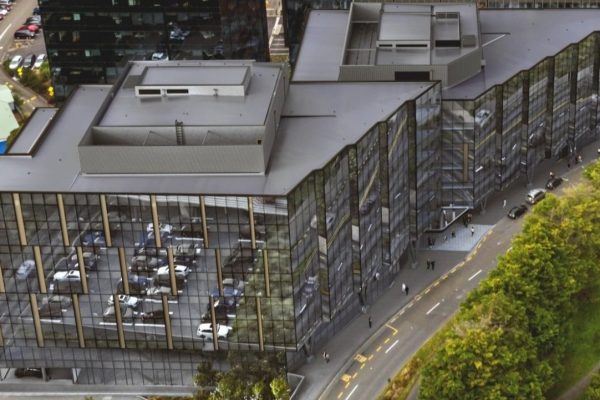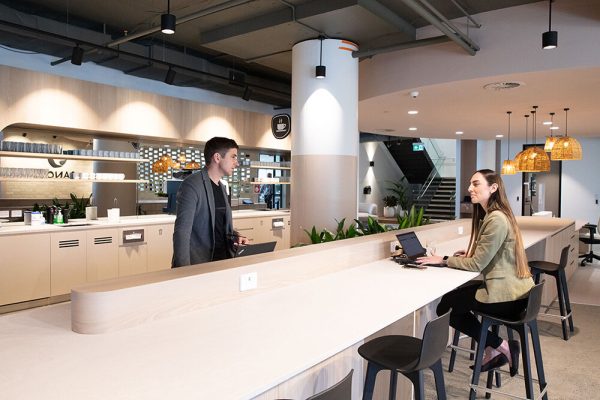What does MYOB do?
MYOB supports businesses across Australia and New Zealand to start, survive and succeed. Our business management platform and products supports businesses including soloists, SME’s and Enterprise Companies. Our products and services support businesses with accounting software, tax, payroll, payments, financial services, CRM, professional solutions and more.
What is your role?
I am the Head of Workplace Experience at MYOB, where I am part of the employee experience leadership team. This includes everything relating to the workplace, real state, capital investment, operational management which includes how we work, design, layout and use our workplaces to drive outcomes and positive human experiences. How we scale, engage with, and benefit from space through an experience led lens to drive the future of work is what the role is about.
What are the key skillsets you need to acquire in your type of role?
One key skillset is to understand people, whether it be understanding what people need and / or want. You must be very inquisitive. Having the ability to watch, observe, understand, and ask the right questions is critical.
Another key skillset is to understand what an individual believes they need and then to interpret, and solve, for what they actually need. I have to target solutions that give people more benefit than what they perceive they need by considering how one objective impacts another. For example, an individual might see their objective through a very myopic lens targeting innovation, whereas someone in the same meeting may be seeking the opportunity to grow. For this reason, space must support innovation in a setting that enables engagement, energy and involvement, then mentoring will naturally occur. Also, innovation is best delivered as a “team sport” so space must remove barriers and flatten perceived hierarchies to deliver the best outcomes. Ultimately, it is about seeing beyond what an individual perceives by focusing on the collective growth.
And then there’s having the ability to strategically forward plan for the long term through trajectory thinking. I can’t recall where I first heard that term, but it’s about focusing on the long-term strategy, not the short-term requirements. It’s all about how we ensure that what we do, and how we do it, aligns to where we will be in the future, not where we are today. People don’t go to work to solely do work. People go to work to deliver their employers purpose in a mutually rewarding and beneficial culture where they socialise, collaborate, innovate and benefit as humans.
What is the best piece of advice you ever received?
Go further than you think. Be more extreme, be brave and just commit to the outcome and believe in it.
Graeme Scannell
How does your team operate?
I’ve got a very lean team however our reach is much bigger than our scale; we achieve so much more. We say that if you think a small team can’t have a big impact, remind yourself of the impact a single mosquito can have when you are trying to get a good night sleep. I am not suggesting we are irritating, but our impact is bigger than our size suggests. We collaborate with other aspects of EE and the greater business and focus on where we have the greatest positive impacts.
Additionally, in specific areas such as real estate and workplace, when we deliver change, we often increase our impact by partnering with external consultants like Athena Blue Global who we worked with for both our recent Melbourne and Sydney projects. This allows us to broaden our perceptions and thinking and allows us to deliver richer outcomes faster and evolve quicker than others for the benefit of our people.

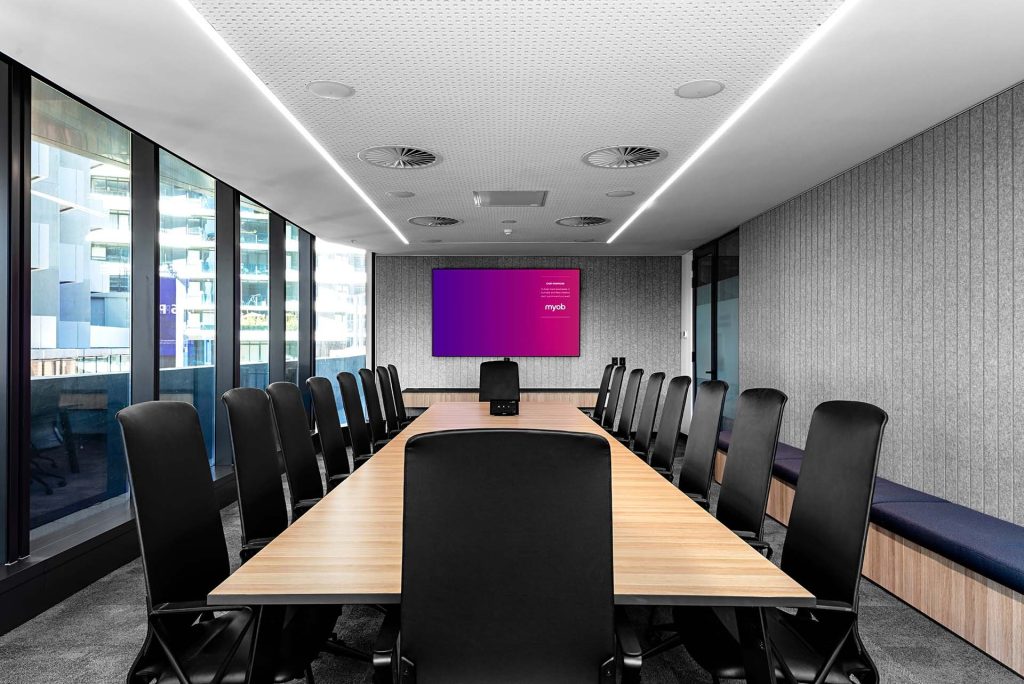
Where did the journey start, what were the first steps in your workplace journey and why is it important?
The first step of the journey is to seek to understand through active observation, understanding and engagement. I needed to understand how MYOB operated as a culture and as a company to best know how space and place must work. Using this knowledge, I created a hypothesis on how best to create space to meet the desired outcomes.
The second step of the journey was working with other partners, such as Athena Blue Global, to discuss what was happening in MYOB, and equally in the broader world. So I did a lot of research, internal reviews and external collaboration. I also researched the future of work and what it could look like. Ultimately, a mix of now and future perspectives were needed to ensure a successful workplace that delivered the best return on the investment; this in turn delivers productivity across a longer term. The overarching component that is required to achieve success is that we must be brave and take decisions using facts, opinions and experience, but mix in a good dose of what your gut tells you to do; be brave and stretch the boundaries.
The reason you need to make brave decisions and use your gut is if you ask a hundred knowledgeable people what the future work will look like, you will have a hundred different opportunities. But there will be some commonality in themes or rhythm that runs through the content and the opinions; look for the nuggets. One nugget is that people will talk about technology as the solution but respond to how they feel. It important that we enable the human part of work and seek to use the technology as the vehicle to allow humans to be human.
We always have to remember that having a trajectory perspective on the future of work delivers an estimation of where we are going, but people may only feel confidence in where they are today, so we have to take them on a journey into the future of work if we want them change. I always push the boundaries in all my projects and allow my trajectory viewpoint on the future of work to influence as much as possible; but even though I stretch the boundaries a lot, retrospectively I often feel I never went far enough. It is in this knowledge that I know the evolution of space and place over the coming years will mean we need to stretch more, change more and make bold decisions; as influencers of space, we influence the future of work, and the future is looking busier than ever.
Therefore, with this knowledge, my advice to my peers is make the next step a big one; a brave one. You will always find things that you won’t do next time but be brave and take risks, because if you don’t, you know it’s going to be wrong in our fast moving world, but if you take the risk, you’ve got a chance of it being right.
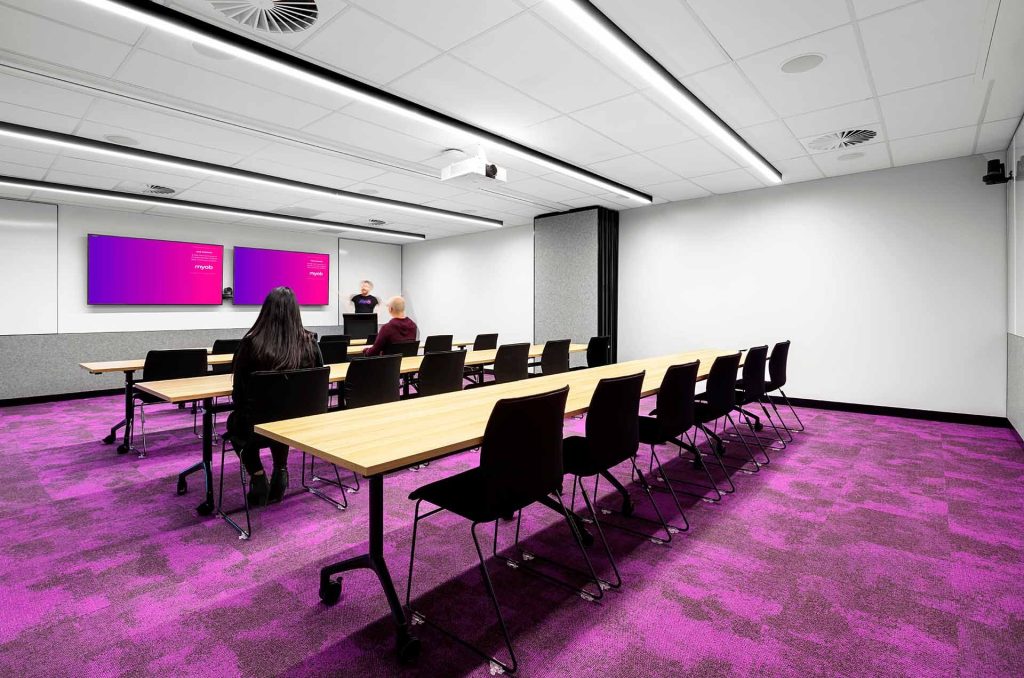

What were you looking to achieve by conducting a workplace strategy with Athena Blue Global, what’s next and why?
In designing our new HQ I wanted a workplace where people want to be, that drives pride, innovation and excites. It had to be a place where we could come together to share, collaborate, grow as people and support our customers. A space which attracts, then enables our talent to beat our competitors and deliver for our customers.
One of the driving principles is access. To ensure that our MYOBers have access to all the space, resources, information and technology that they need. Another part was to create experiences where people can build strong social, cultural and brand connections; engaged people are effective and when they are engaged in effective space, output doubles.
Customers drive our world. We want to collaborate and innovate with and for customers in person and on our business management platform, and in delivering our space, we do so working with great consultants and contractors.
Lastly, at MYOB our talent is a constellation of stars, so our workplaces facilitate delivering as a team. We designed a place that enables mentoring, removing the mindset of “me delivering as an individual” with “us delivering together”. We know that our long term success requires us to build the next generation of talent and I see space playing an integral part in that aim.
What key success metrics within your organisation will you be looking for as a result of your workplace strategy?
I suppose one of the metrics you can measure is engagement. Our engagement scores have risen locally every time we have delivered a major workplace project. Another important metric is people engaging and using the work settings effectively; and what are they saying about them. Are they bringing more customers to the office because they are proud? These metrics, along with output, are effective measures of success.
Although anecdotal, I love walking around the office; watching people engage with the space. Seeing, hearing and feeling their excitement means a lot to me. Hearing and seeing people laughing, chatting in corridors, building relationships, just enjoying and using the space is enough for me to feel success in a project. That social capital that you can feel when people are having meaningful experiences may be hard to measure but the best feedback you can ever receive.
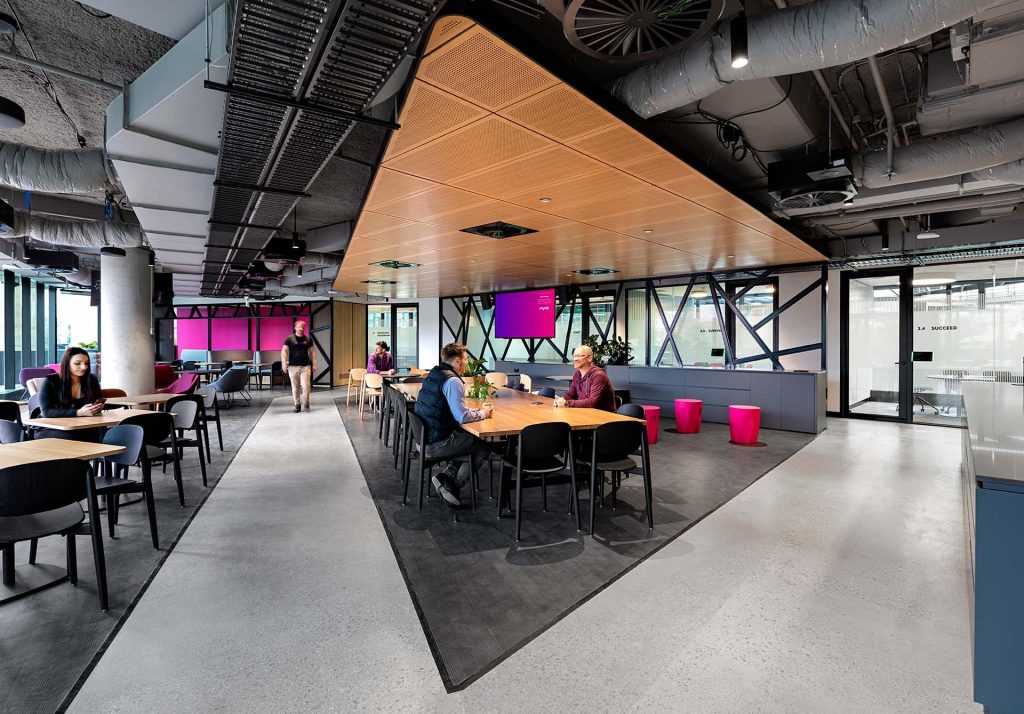
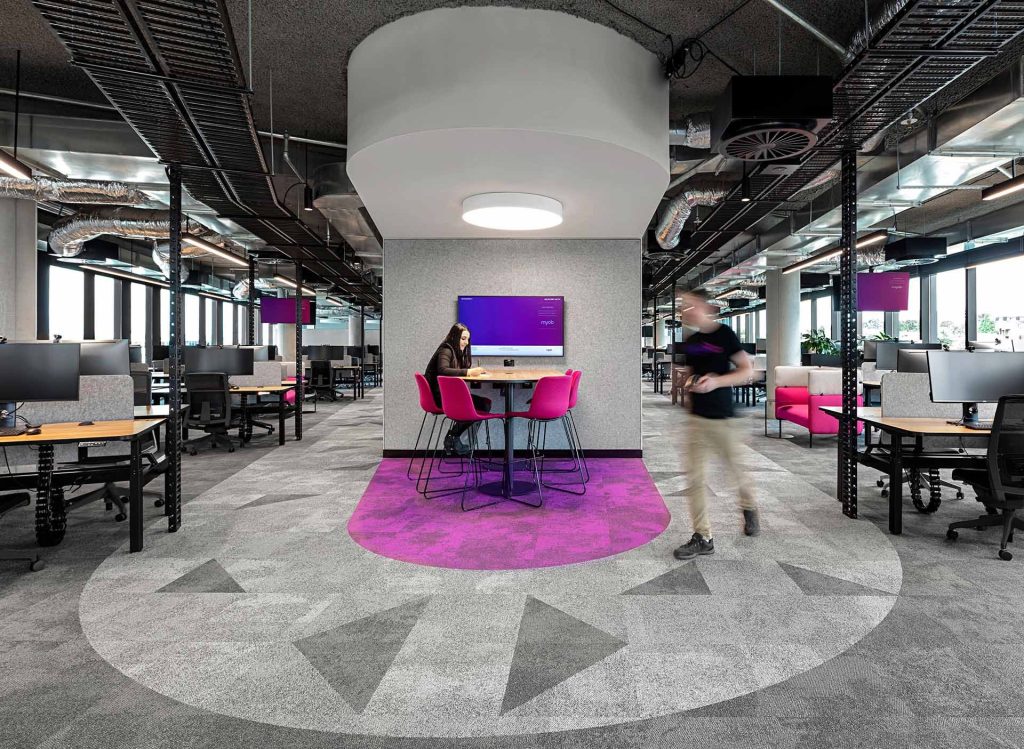
What have you learned along this workplace journey so far?
I believe every day is a school day. Even though I always say be brave and push the boundaries, I also say that I could have challenged myself and gone even further. Always ask yourself if you are going far enough; and then push those boundaries further.
Also, create your own constellation of stars on any project, then set the strategy, build the excitement, build the belief and go hell for leather.
How has the workplace changed in the post-COVID business era?
We are so much more acutely aware of how important culture is to build and retain a team. Also, with working from home being broadly adopted as an extension of the workplace, or a place of work, people working from home for part of their week should be promoted, but it needs to be in balance to time in the office.
Covid and lockdowns have validated my belief that innovation has better results when you are together, and tasks happens when you aren’t. We do however have to re-train the world to understand that ticking through a list of tasks is not a measure of productivity; productivity is delivering on all aspects of your role including mentoring, supporting, managing and planning; pick the place and set the balance that suits the team, not the person. I hope everyone can realise that being people centric brings happiness and success.
What advice would you give anyone who is feeling a little lost thinking about the impact of COVID-19 on their workplace?
The last two plus years has been difficult for everyone. It is important to absorb and understand where people are mentally and emotionally, and that people will be in very different places when it comes to the returning to the office. Just because I’m excited to come back to the workplace to collaborate and socialise, to get involved in innovation with my team, I have to understand that everyone is not at this point in their change journey. My advice to all employers is to work with your people, determine what’s good for them and the company and then make a plan to evolve towards what you as an organisation believe is right for you, but don’t forget that people are social beings and that employers have a responsibility to ensure positive wellbeing, and in my opinion that means coming together in the office to socialise, innovate and to build meaningful relationships.
